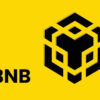
In the fast-paced world of cryptocurrency, scalability is a crucial factor that determines a platform’s long-term success. As digital assets like Bitcoin and Ethereum grow in popularity, they face increasing pressure from congested networks and slower transaction times. Binance Coin (BNB), the native cryptocurrency of the Binance exchange and Binance Smart Chain (BSC), has made significant strides to address scalability issues. This article delves into how Binance Coin is tackling scalability and why this is vital for its growth and adoption.
1. What Is Scalability in Blockchain?
Scalability refers to a blockchain’s ability to handle a growing amount of transactions without compromising speed, security, or cost. In the early days of cryptocurrency, transaction volumes were low, and scalability was not a primary concern. However, with millions of users now transacting daily, network congestion, higher fees, and slower transaction times have become pressing issues for many blockchains.
2. The Scalability Challenges in Cryptocurrency
Bitcoin and Ethereum, the two leading cryptocurrencies, have experienced well-documented scalability challenges. Bitcoin can process approximately 7 transactions per second (TPS), while Ethereum currently manages around 15-30 TPS. These numbers pale in comparison to traditional financial systems like Visa, which can process thousands of transactions per second. The congestion leads to higher gas fees and longer confirmation times, driving users to seek alternative solutions.
3. Binance Smart Chain’s Role in Tackling Scalability
One of the key innovations from Binance is the development of Binance Smart Chain (BSC), launched in September 2020. BSC was designed as a high-performance blockchain with the following features:
- Dual Chain Architecture: BSC operates alongside the Binance Chain, allowing users to seamlessly transfer assets across both platforms. This dual architecture enables high throughput without compromising security or speed.
- High Transaction Speed: BSC can handle 100-160 TPS, significantly more than Ethereum’s current capacity. This makes it a more attractive option for decentralized applications (DApps) and decentralized finance (DeFi) projects.
- Lower Transaction Fees: Compared to Ethereum’s rising gas fees, BSC offers significantly lower fees, which is a key attraction for both developers and users. This makes the blockchain more scalable and cost-effective, even as the number of users grows.
4. Consensus Mechanism: Proof of Staked Authority (PoSA)
BSC uses a hybrid consensus mechanism known as Proof of Staked Authority (PoSA). This is a combination of Proof of Stake (PoS) and Proof of Authority (PoA), allowing the network to achieve fast block times and efficient finality.
- Efficient Block Generation: Validators on the network are selected based on their staked Binance Coin (BNB), which not only ensures decentralization but also incentivizes validators to act in the best interest of the network.
- Lower Energy Consumption: Compared to Bitcoin’s energy-intensive Proof of Work (PoW) model, PoSA is much more efficient, reducing the environmental impact while improving scalability.
5. Layer 2 Solutions and Cross-Chain Integration
In addition to its robust Layer 1 infrastructure, Binance Smart Chain is exploring Layer 2 scaling solutions. These include off-chain protocols that enable faster transactions and lower fees by reducing the load on the main blockchain.
- Cross-Chain Compatibility: BSC is also highly interoperable with other blockchains, such as Ethereum, through cross-chain bridges. This allows users to transfer assets between chains, improving liquidity and scalability across multiple networks.
6. Adoption of Binance Coin in DeFi and NFTs
One of the key drivers of BNB’s success in addressing scalability is its adoption in the rapidly growing decentralized finance (DeFi) and non-fungible token (NFT) sectors. The Binance ecosystem offers a wide range of decentralized applications, and developers are flocking to BSC due to its scalability, low fees, and high performance.
- DeFi Growth: BSC has become a leading blockchain for DeFi projects, offering faster transactions and lower fees compared to Ethereum. Platforms like PancakeSwap, Venus, and Autofarm have all chosen BSC as their preferred blockchain, contributing to its growing adoption.
- NFT Marketplace: The Binance NFT marketplace is built on BSC, leveraging its scalability to offer low-cost minting and transactions. As the NFT space grows, Binance Coin is poised to benefit from this surge in activity.
7. Conclusion: The Future of Binance Coin and Scalability
Scalability will remain one of the most critical challenges in the blockchain industry, especially as more users and applications continue to enter the space. Binance Coin, through the Binance Smart Chain, has taken a proactive approach to addressing these issues. By offering faster transactions, lower fees, and a highly scalable ecosystem, BNB is positioning itself as a major player in the world of decentralized finance and blockchain technology.
As the demand for scalable blockchain solutions continues to rise, Binance Coin is well-equipped to meet these needs, ensuring its longevity and relevance in the rapidly evolving crypto landscape.











